These London Road premises partly occupy the site of the once well known Granada cinema. The palatial building was officially opened in 1937 by the ‘high-kicking, saucer-eyed’ film star Jessie Matthews. The building is named after what was probably the greatest of Henry VIII’s palaces which stood on the west side of today’s Nonsuch Park. He built the palace to outshine his great rival, the King of France, declaring that there was none such like it!
Illustrations and text about Nonsuch Mansion House.
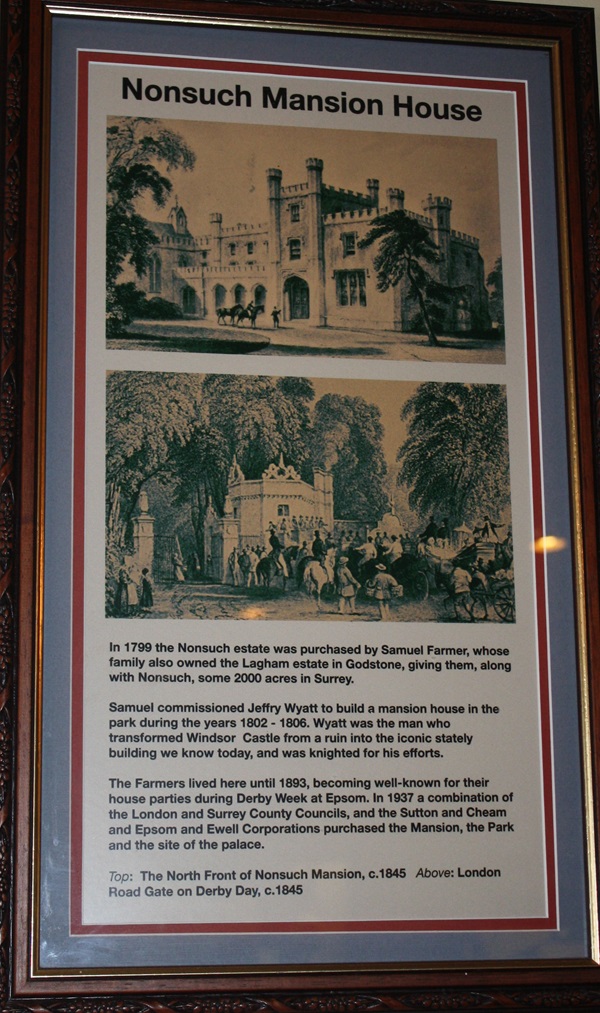
The text reads: In 1799 the Nonsuch estate was established by Samuel Farmer, whose family also owned the Lagham estate in Godstone, giving them, along with Nonsuch, some 2000 acres in Surrey.
Samuel commissioned Jeffry Wyatt to build a mansion house in the park during the years 1802-1806. Wyatt was the man who transformed Windsor Castle from a ruin into the iconic stately building we know today, and was knighted for his efforts.
The Farmers lived here until 1893, becoming well known for their house parties during Derby week at Epsom. In 1937 a combination of the London and Surrey County Councils, and the Sutton and Cheam and Epsom and Ewell Corporations purchased the Mansion, the Park and the site of the palace.
Top: The North Front of Nonsuch Mansion, c1845
Above: London Road Gate on Derby Day, c1845.
An illustration and text about Henry VIII and the Nonsuch area.

The text reads: In 1538 Henry VIII found the perfect site for a palace of unparalleled extravagance. However, Cuddington village and its church happened to be there already, but that was a mere trifle and they were pulled down. Nearby Merton Priory was also pulled down, providing 3,600 tons of stone for the foundations.
The new palace was to be a “non-pariel”, taking magnificence to new extremes, and so it was called ‘Nonnesuch’. It was Henry’s attempt to outswagger the palace at Fontainebleau, the pride of the French Kings. The whole palace was encrusted with decorated panels in gilded and painted stucco, placing Henry and his son and heir, Prince Edward, in a pantheon of gods from classical mythology.
Henry died in 1547, with his palace not quite finished. Queen Mary sold it to Henry Fitzalan, 12th Earl of Arundel, in 1556, and he completed it “as by the first intente… of the Kinge, his old maistor”.
Fitzalan’s son John, Lord Lumley, inherited debts to the Crown due to the building works. Queen Elizabeth pressed him until he gave her Nonsuch to cancel the outstanding debt. Nonsuch was a residence of the Queens of England until the Commonwealth period (1648-1660).
After the ‘restoration’ of the monarchy in 1660 Charles II gave Nonsuch to his mistress Barbara Villiers, Lady Castlemaine, whom he created Duchess of Cleveland and Baroness Nonsuch.
During this period Nonsuch fell into decay. Baroness Nonsuch was short of cash, and she had the palace pulled down, selling the materials and parklands. Thus the unequalled land was levelled.
Almost nothing now remains of what was one of the most remarkable palaces in Europe. The site is now largely occupied by a field of wild grass and cow parsley, inhabited in summer by a profusion of butterflies.
Prints and text about Brock’s Fireworks.
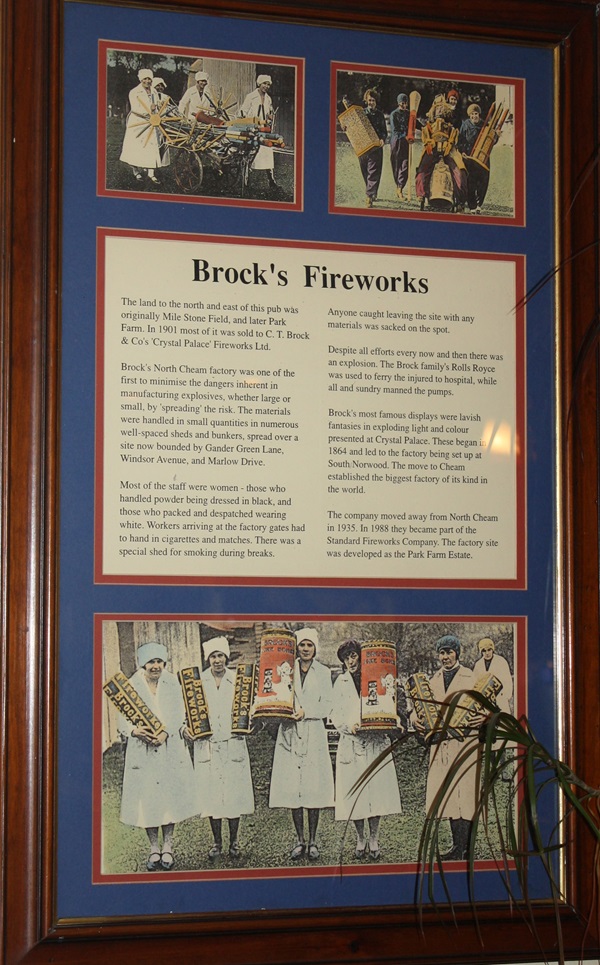
The text reads: The land to the north and east of this pub was originally Mile Stone Field, and later Park Farm. In 1901 most of it was sold to C.T. Brock & Co.’s ‘Crystal Palace’ Fireworks Ltd.
Brock’s North Cheam factory was one of the first to minimise the dangers inherent in manufacturing explosives, whether large or small, by ‘spreading’ the risk. The materials were handled in small quantities in numerous well-spaced sheds and bunkers, spread over a site now bounded by Gander Green Lane, Windsor Avenue, and Marlowe Drive.
Most of the staff were women- those who handled powder being dressed in black, and those who packed and despatched wearing white. Workers arriving at the factory gates had to hand in cigarettes and matches. There was a special shed for smoking during breaks.
Anyone caught leaving the site with any materials was sacked on the spot.
Despite all efforts every now and then there was an explosion. The Brock family’s Rolls Royce was used to ferry the injured to hospital, while all and sundry manned the pumps.
Brock’s most famous displays were lavish fantasies in exploding light and colour presented at Crystal Palace. These began in 1864 and led to the factory being set up at South Norwood. The move to Cheam established the biggest factory of its kind in the world.
The company moved away from North Cheam in 1935. In 1988 they became part of the Standard Fireworks Company. The factory site was developed as the Park Farm Estate.
Illustrations and text about the mystery of Nonsuch.
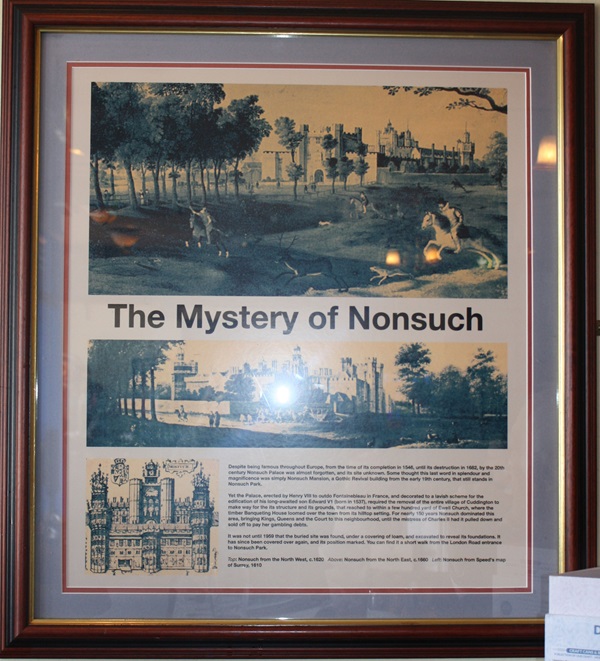
The text reads: Despite being famous throughout Europe, from the time of its completion in 1546, until its destruction in 1662, by the 20th century Nonsuch Palace was almost forgotten, and its site unknown. Some thought this last word in splendour and magnificence was simply Nonsuch Mansion, a Gothic Revival building from the early 19th century, that still stands in Nonsuch Park.
Yet the palace, erected by Henry VIII to outdo Fontainebleau in France, and decorated to a lavish scheme for the edification of his long-awaited son Edward VI (born in 1537), required the removal of the entire village of Cuddington to make way for the structure and its grounds, that reached to within a few hundred yards of Ewell Church, where the timber Banqueting House loomed over the town from its hilltop setting. For nearly 150 years Nonsuch dominated this area, bringing Kings, Queens and the Court to this neighbourhood, until the mistress of Charles II had it pulled down and sold off to pay her gambling debts.
It was not until 1959 that the buried site was found, under a covering of loam, and excavated to reveal its foundations. It has since been covered over again, and its positioned marked. You can find it a short walk from the London Road entrance to Nonsuch Park.
Top: Nonsuch from the North West, c1620
Above: Nonsuch from the North East, c1660
Left: Nonsuch from Speed’s map of Surrey, 1610.
A print and text about Sir Edwin Landseer.
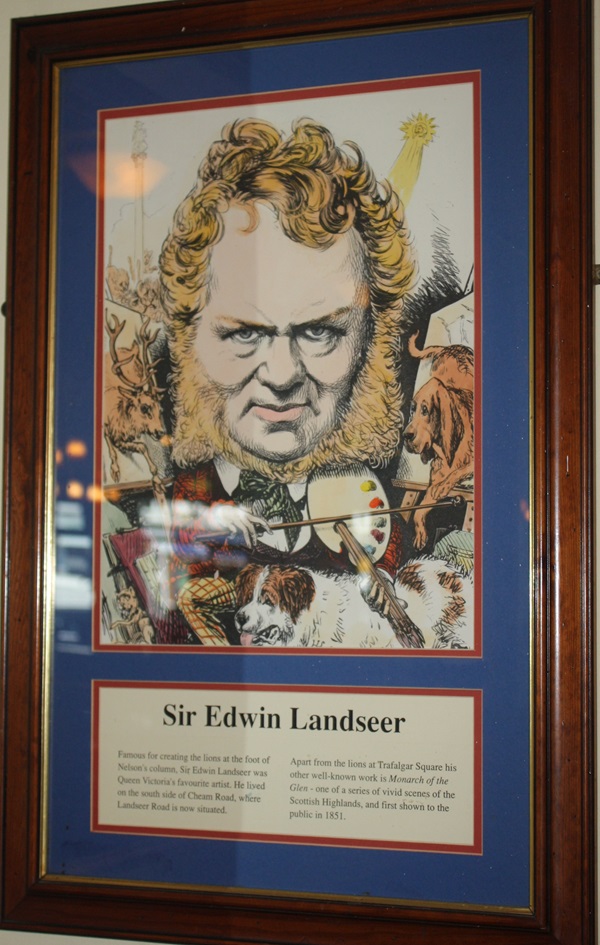
The text reads: Famous for creating the lions at the foot of Nelson’s column, Sir Edward Landseer was Queen Victoria’s favourite artist. He lived on the south side of Cheam Road, where Landseer Road is now situated.
Apart from the lions at Trafalgar Square his other well-known work is Monarch of the Glen- one of a series of vivid scenes of the Scottish Highlands, and first shown to the public in 1851.
A print and text about Henry VIII.
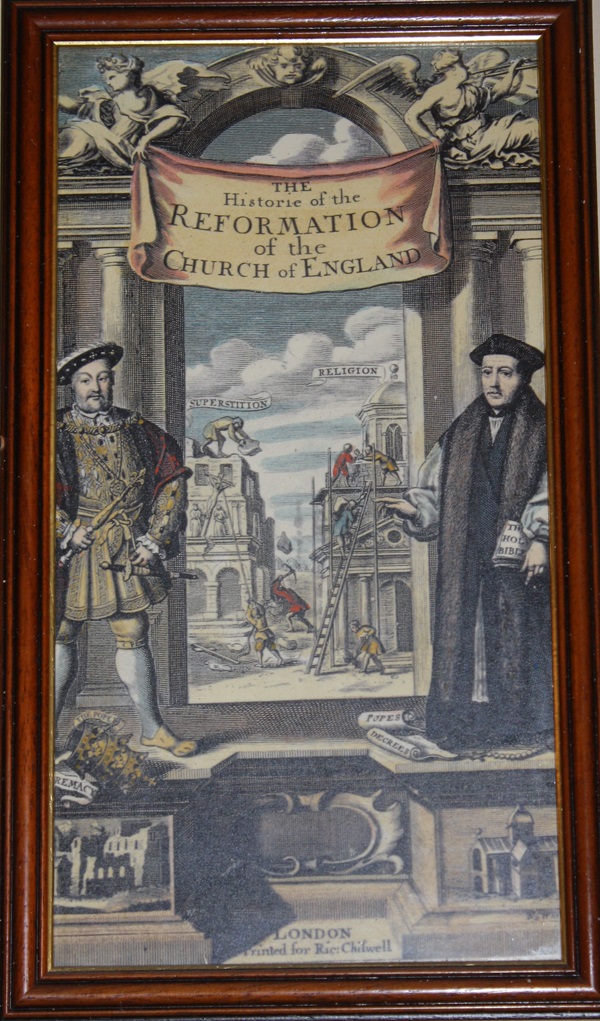
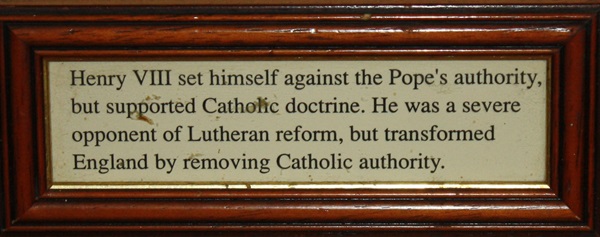
The text reads: Henry VIII set himself against the Pope’s authority, but supported Catholic doctrine. He was a severe opponent of Lutheran reform, but transformed England by removing Catholic authority.
A print and text about Henry VIII.
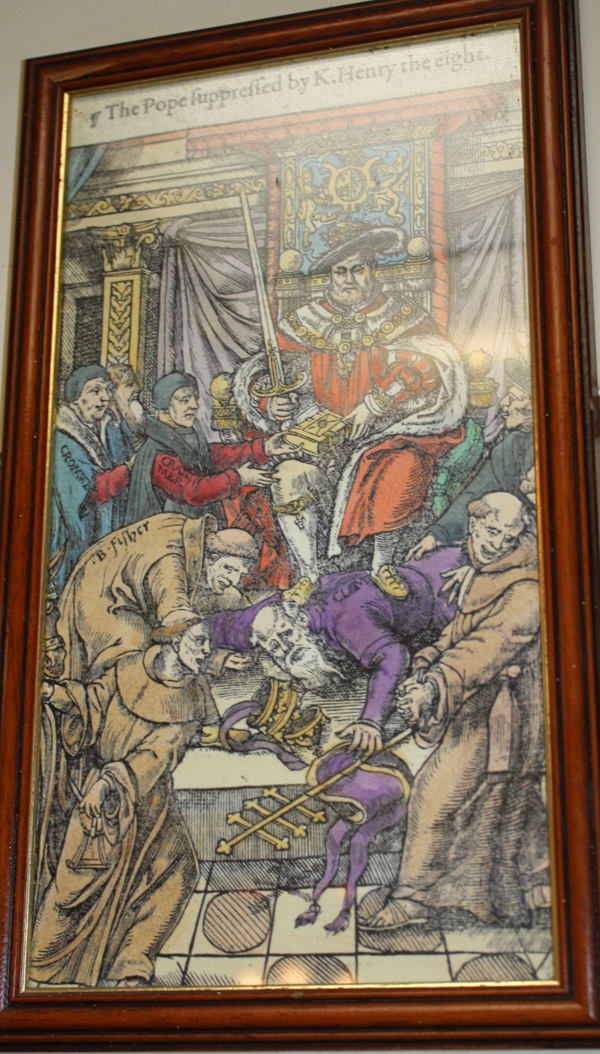

The text reads: Edward VI, son of Henry VIII, was ten when his father died in 1537. At Nonsuch the decorative scheme showed him and his father in line of descent from the classical gods. Edward died young in 1553.
A photograph of London Road, North Cheam, c1890.
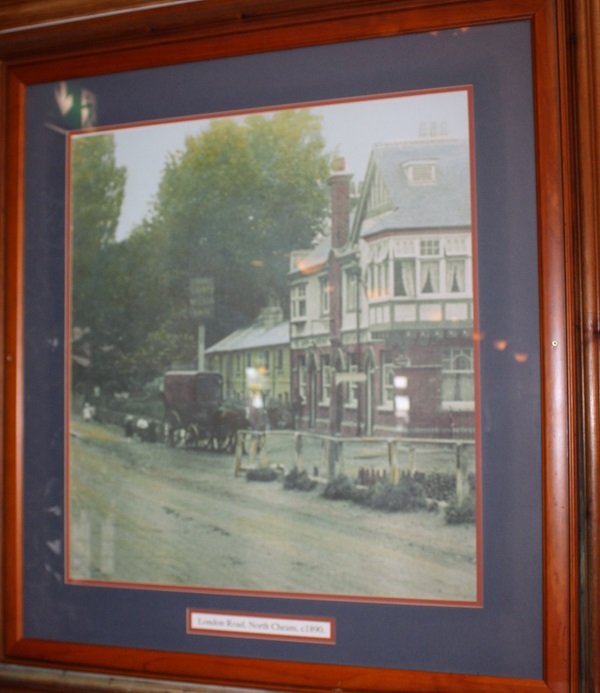
A photograph of Cross Roads, Cheam, c1950.
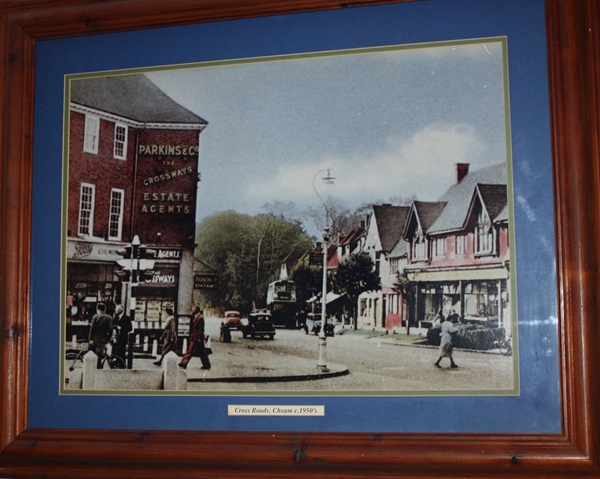
A photograph of the Old Village, Cheam, c1908.
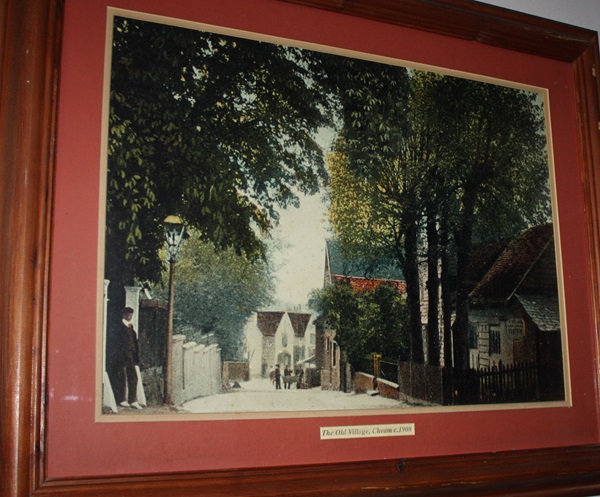
A photograph of High Street, Cheam, c1908.
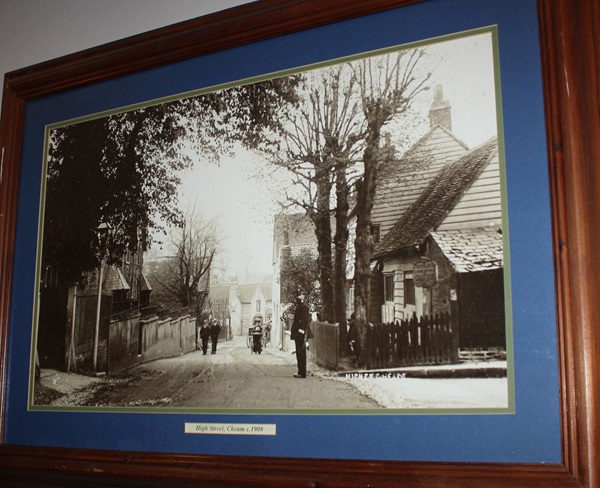
A photograph of cottages in London Road.
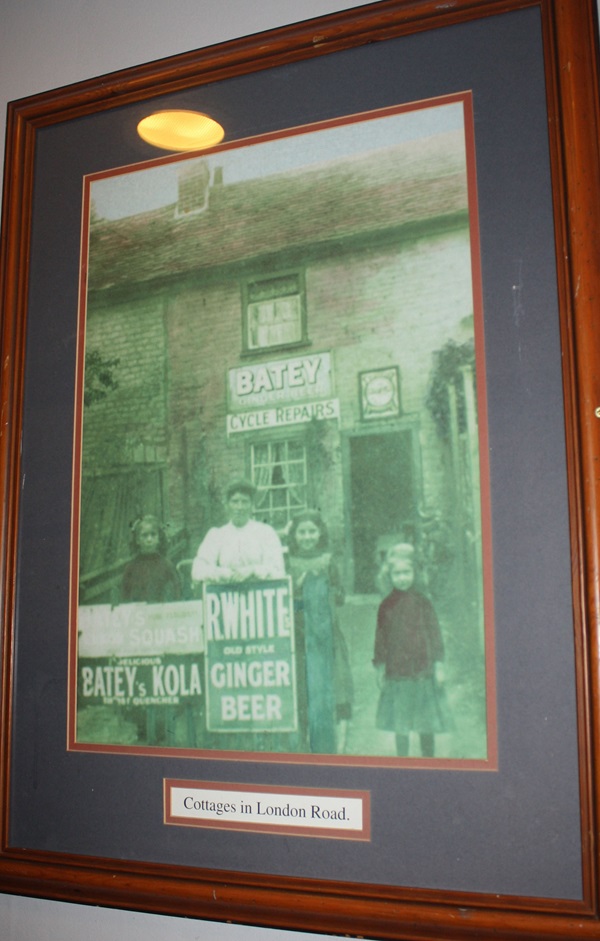
Photographs of Nonsuch Park, Cheam, c1920.
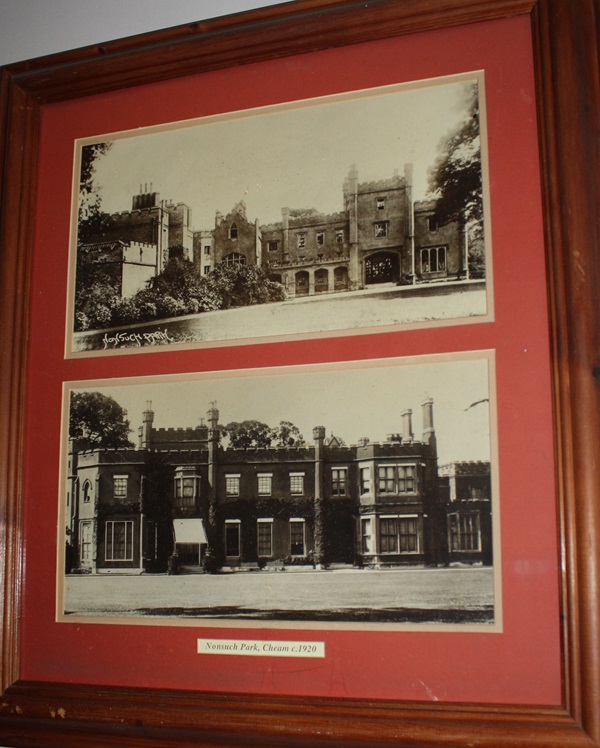
External photograph of the building – main entrance.

If you have information on the history of this pub, then we’d like you to share it with us. Please e-mail all information to: pubhistories@jdwetherspoon.co.uk